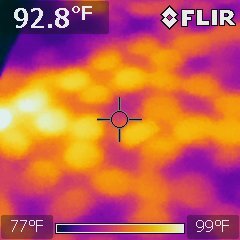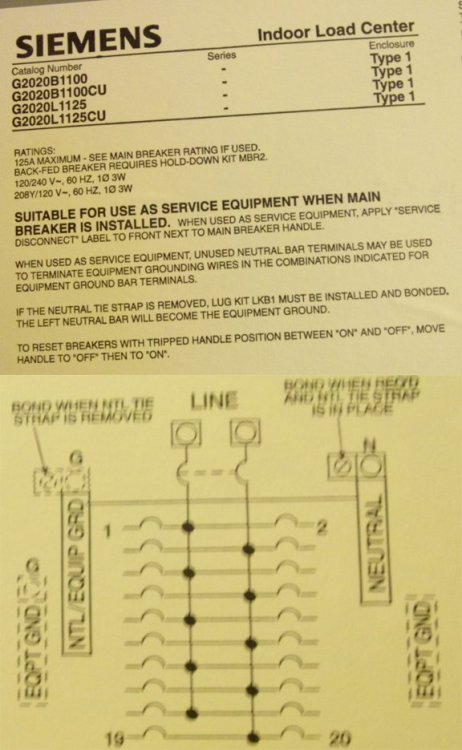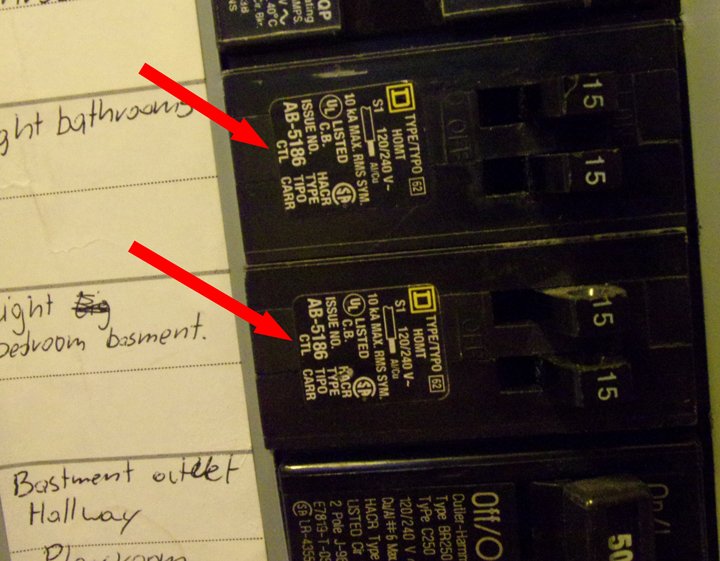
SNations
Members-
Posts
181 -
Joined
-
Last visited
Personal Information
-
Location
USA
-
Occupation
Recent Profile Visitors
The recent visitors block is disabled and is not being shown to other users.
SNations's Achievements

Member (3/5)
3
Reputation
-
Do any of you have experience with what a water leak in a radiant floor heat system looks like with infrared? I don't really understand what I'm seeing at this bathroom floor. Other areas of the house with radiant floor heat look just like you'd expect.
-
Do any of you folks know if the NEC has a requirement to limit voltage drop? I sure thought that the NEC had a recommendation on voltage drop, but it wasn’t a requirement. But I can’t find that info now. Any help here is much appreciated. Steve
-
Thanks very much Jim. Appreciate the help. (DYSWIDT?)
-
Does anybody know anything about this type of electrical receptacle? It was in a bathroom so I'm assuming it's supposed to be GFCI, but I don't see any "test" or "reset" markings (I don't know if that's required but I always see it). Plus it was dead. I've never seen one like this before.
-
SNations started following 80% limit and Spectroscope
-
I got an email today from InspectorPro Insurance asking for feedback from some questions, among them being what are the benefits and limitations of spectroscopes. Do any of you guys use a spectroscope? And if so, what for? Can it tell you anything about the flame in a gas appliance? I've never heard of any home inspector using anything like this. There's a little itching in the back of my brain that's telling me that they really mean borescope. But I thought I'd ask, because if a spectroscope would really come in handy that would be awfully cool. Steve
-
-
Chicago house built 2005. The panel clearly doesn't allow any tandem breakers, right? Based on the schematic and the catalog number. So if there's a tandem breaker or two, and they're marked "CTL", would somebody have had to physically alter the breaker in order to make it fit?
-
Thanks guys. Bill, so in answer to my question it seems that there's no prohibition for a running trap, only a restriction on its location just like all traps. And Jim, I don't see any requirement that a trap be listed or labeled. At least not in the IRC. Is that a UPC thing?
-
I have heard that a "running trap" wasn't allowed, but when I tried to look up a code citation I couldn't find anything. About all it says is that traps shall be of a standard design, which is a rather nebulous term. Can anybody shed light on the concept of a running trap? Is it allowed by code? Not allowed by practice? Anything? Thanks
-
I suspect that this building was raised many years ago and the wood frame part was built underneath the original masonry structure. Chicago has a long history of raising buildings, even some very big ones. This city has long struggled with how high it wants its streets to be above the swamp and which direction it wants its river to flow. Also, that mortar joint is done that way so that they didn't have to grind out any old mortar. Probably the mortar was fine but not great and the homeowner wanted to tuck point, for visual reasons as much as anything. I see lots of tuck pointing that's just basically painting a very thin layer of new mortar. This way at least they get a thicker bed of mortar so that it's not so likely to flake off after just a couple of years.
-
Do any of you guys know what this is? This is a kitchen cabinet underneath the second (prep) sink in a very large kitchen in a very large house. It's a rectangular plastic piece that's screwed down at all four corners. The scalloped edge is part of a hole that goes through the cabinet bottom to the kitchen floor below. My first thought is that it's part of a system to turn on the sink with your foot that hasn't been completed. Thanks Steve
-
Should we skip this one?
SNations replied to BestFaceForward's topic in Indoor Air Quality (I.A.Q.) and Mold Forum
This document from the U.S. Centers for Disease Control is one of my favorites regarding mold. https://www.cdc.gov/mold/faqs.htm You should take a look at it. A few highlights: So knowing the type of mold isn't really helpful. And this testing seems especially unhelpful because it didn't help at all (as far as I can tell) in pinpointing the source of the water that's causing the mold. So when you tell us how much mold was found, that's not really helpful either, because there's no standard for what's too high. Again the type of mold you may have isn't really important. Apparently you don't want to live in a house that grows mold where your kids are going to play. I don't blame you. I wouldn't either. But the question is: can the source of the water be identified and fixed, right? I don't think there's enough information here for anybody to help make that determination. You need a good home performance specialist to look at the house and figure it out. Good luck. -
This might not be so unusual. In the IBC, table 506.2 lists the allowable floor area of a building based on occupancy type and construction type. If this building is of type III construction (exterior walls built of noncombustible materials) then even without sprinklers it could have a floor area of 16,000 square feet for any type of residential occupancy. So it's not so crazy to think that back in 1974 they wouldn't have required a fire wall anywhere in this building -- if it's type III. If the exterior wall is combustible then you're down to probably a 7,000 square feet limit, and so at least one fire wall probably would have been required depending on the sizes of the units.
-
So if a manufacturer makes a piece of equipment that uses 14 amps (with a standard 15 amp plug) then how do they ensure that it's only used on an "individual branch circuit"? Just with instructions? That seems awfully tenuous to me. I can see how that might work for something like a clothes dryer or electric range. But I don't see how that works for anything with a standard 15 amp plug, like a hair dryer or toaster oven. The opportunities for the average person to violate the rule are just too great.
-
I have another electrical question for everybody. NEC section 210.23(A)(1) says that for 15 and 20 amp circuits "The rating of any one cord-and-plug connected utilization equipment not fastened in place shall not exceed 80 percent of the branch-circuit ampere rating." So am I correct that this is a requirement not for the guy running wire through your house, but it's a requirement for the folks making your hair dryer. A manufacturer can't (or shouldn't) make anything with a standard plug for use on a 15-amp circuit such that the appliance is designed to use more than 12 amps. If it's got a plug so that it can only be plugged into a 20 amp receptacle then it can't be designed to use more than 16 amps. An electric clothes dryer on a 30-amp circuit shouldn't be designed to use more than 24 amps. Thanks Steve







